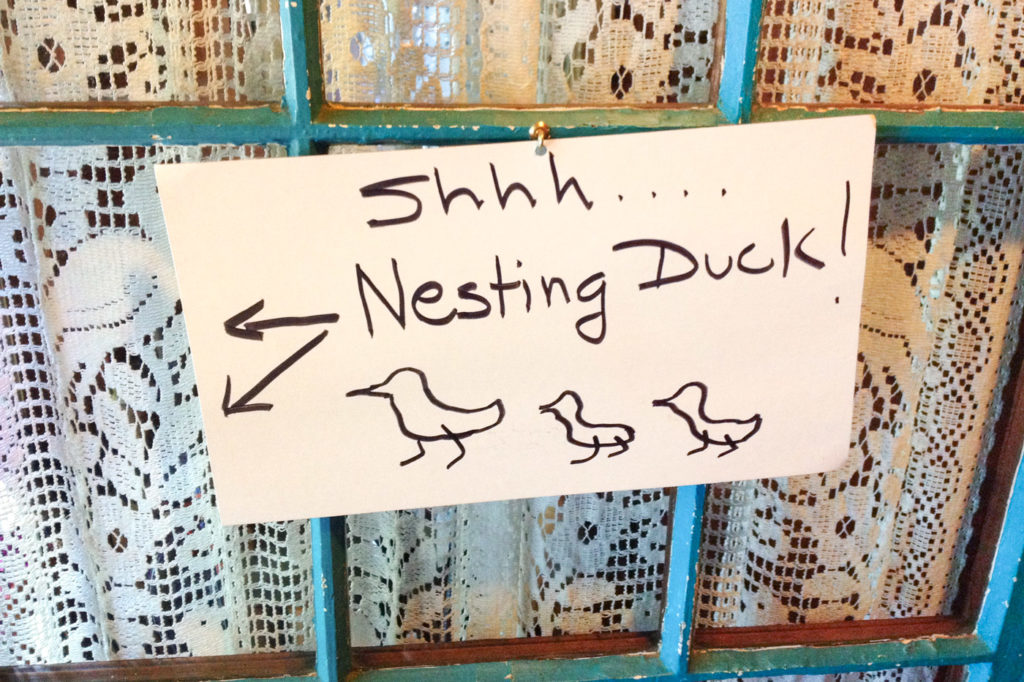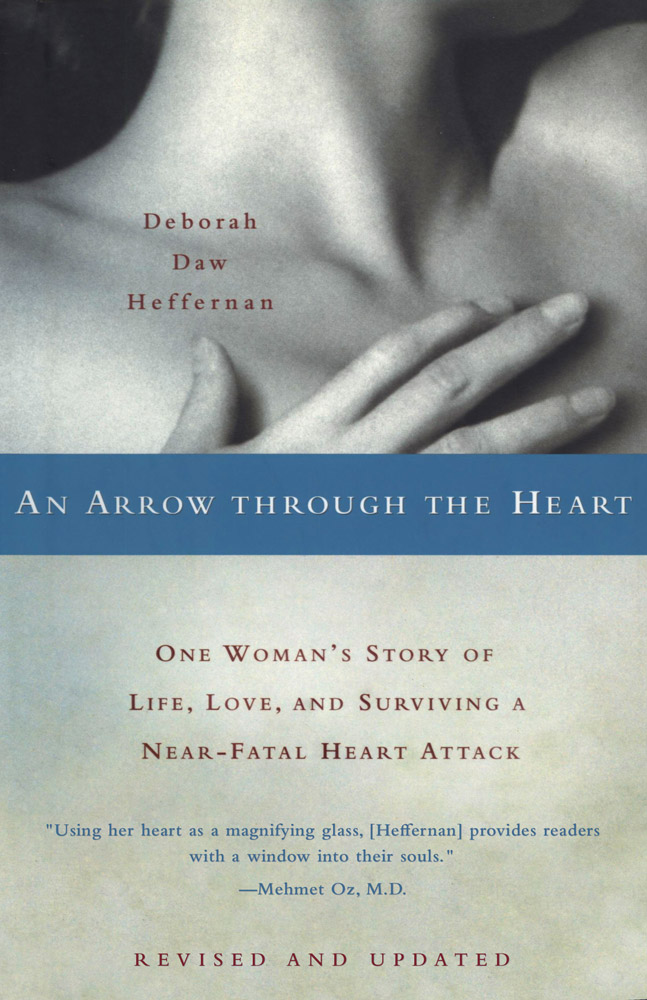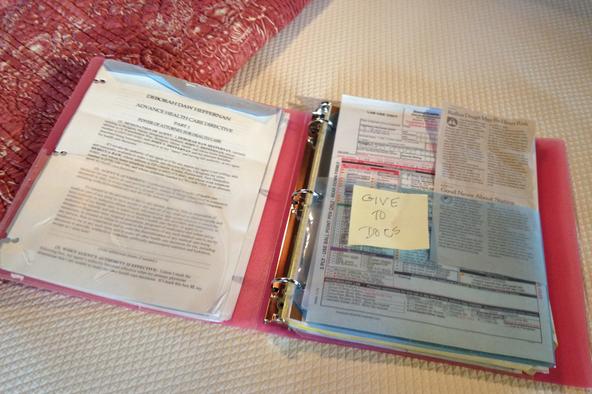TIPS & TOOLS

We found the ducks bustling through the woods to the lake, followed closely by darting, yellow fluff balls. One by one the ducklings hopped in the water for their first swim. It was more like bobbing around, but they were launched!
ILLNESS CAN BE A NEST FOR LAUNCHING A MORE CONSCIOUS LIFE
Because of the attentiveness required for survival and recovery following a heart attack or heart transplant, I have come to see cardiovascular disease as a meditation practice. Illness has increased my consciousness, as well as my sense of connection to all of life. I wish the same for you, but it takes work. For starters, you have to make your nest safe and secure by putting a few systems and routines in place. By engaging in my cardiovascular disease from the very beginning, I have managed to create a solid platform for a life that includes illness, pain, and cautions, as well as birthday parties and perfect peaches. You, too, can do this.
SCARED? WORRIED? GETTING ORGANIZED HELPS
This Tips & Tools page and my blog—both works-in-perpetual progress—offer practical suggestions to help you live well in Cardiac Land. Everything I recommend to you has helped me construct a good life, even an adventurous one, despite almost 20 years of multiple cardiac disasters, hospitalizations, operations (including a heart transplant), restrictions, complications, and myriad medications with their side-effects.
Admission: my penchant for organizing my terror is slightly nuts. For example, as I faded away with heart failure and hoped for a heart transplant, I wrote a manual of chores that need doing on our property during each month of the year—here in the wilds of western Maine—in case I died. If you are more normal and instead go a little spastic when you are worried and confused, maybe you’ll appreciate a few TIPS& TOOLS that have emerged from years of managing my worst fears and daily needs. By organizing life in Cardiac Land, I have found that I spend less time fretting and more time living well!
Scroll down or click below for more information and worksheets:
MY TOP 10 TIPS & TOOLS for managing your cardiac event.
YOUR MEDICAL NOTEBOOK including annotated forms.
Stay tuned for more Tips & Tools here, on my blog, and on Facebook. Thanks for understanding that I only “Friend” people I know. Anyone can “Follow” me, although I have absolutely no idea where I am going!
FIRST TIP: IDENTIFY YOUR CORE TEAM
The following tip is an example of what I’ll be posting on this website from time to time, primarily on my blog. Illness—especially chronic illness—is a team sport, including you, your key clinicians, and a few intimates, although these players may change over time. Feeling a little shy about asking for help? My husband Jack and I certainly were at first, then we discovered that, far from being bothered, friends and family take comfort in having something to do that is truly helpful.
So who exactly is on your core team? Talk with them and make your needs and expectations clear. You will also need a team captain, who is your primary advocate. Mine is Jack because he knows my wishes best. Like Jack, your team captain plays two vital roles:
1) If you become incapacitated, your team captain is your spokesperson with both clinicians and intimates.
2) In every medical examination and meeting, your team captain should be by your side (or part of a phone conference)—providing an important second pair of ears, as well as emotional support. If Jack cannot be with me, other team members help out. I am careful, however, not to wear out anyone’s generosity and spread my requests around.
MY TOP 10 TIPS & TOOLS

An antique tray holds all my meds on a chest made by a dear friend. Inside? Gifts for small children. Shhhh!
I first learned of my extreme cardiac condition when ambushed by a SCAD-induced heart attack during a gentle yoga class. With my stellar health history, clearly I was not prepared for that first massive MI followed by open-heart surgery, a double by-pass, ventricular tachycardia (a deadly arrhythmia), and a shiny ICD implanted in my chest. Neither was my husband, whose life also changed abruptly that day.
Though shocked and scared, Jack and I systematically took charge of many details. Slowly, our scattered “to-do” lists of new behaviors and tools coalesced into a new-normal life. Little did we know that by setting up supporting systems and routines, we were practicing for a future that, nine years later, would include a heart transplant—with more systems and routines leading, eventually, to another new-normal life.
Click MY TOP 10 TIPS & TOOLS for a downloadable, printable checklist to help you set up your new life in Cardiac Land. My husband and I slowly calmed down as we put these 10 immediate, practical supports into place. For one thing, organizing gave us something to do besides worry! More importantly, we gained confidence knowing that we had created the best structure and network possible for saving my life. The rest was up to medical skill and the gods.
Taking charge of my cardiovascular disease has enriched my experience and knowledge of human life. For example, today I am more informed about my body’s complex biochemistry; I marvel that I did not find this fascinating in school. With time, I have come to actually enjoy learning about each medication’s impact, both contributions and nasty side effects. If you are less of a nerd than I am, by setting yourself up properly you will at the very least gain the following advantages.
- Bring the healthiest You possible to every check-up, procedure, and emergency—a huge assist to clinicians who have dedicated their lives to saving yours.
- Minimize your stress, as well as the stress of those closest to you—because knowledge and competence are always calming.
- Gain even more respect and commitment from your medical team—inspiring their best efforts.

Available as an eBook at online retailers and at your local bookstore. All my book-related earnings are donated to cardiac causes. So, buy a book and save a life!
YOUR MEDICAL NOTEBOOK

Hot pink was all I could find at the time, but it has turned out to be a good color choice. If I leave it behind in the rush from check-up to check-up at MGH, everyone knows it’s mine!
MY MOST IMPORTANT “TIP & TOOL” FOR YOU: AN ORDINARY 3-RING BINDER
The foundation for managing life in Cardiac Land—your MEDICAL NOTEBOOK—keeps all your most vital health information in one, portable place: an ordinary 3-ring binder. My notebook is based on one that Massachusetts General Hospital gives every transplant patient. I offer my example as a leaping-off point for creating your own personalized system. You may prefer to computerize it, but during medical meetings, a lot of paperwork is exchanged and needs a place immediately, making a notebook my choice of organizer.
Why do I keep my own notes, rather than rely on clinicians’ records? I have found that my own longitudinal record allows me to monitor trends and, therefore, to participate more fully in discussions about my health. Furthermore, I often have information, such as test results, in my notebook that has not yet made it into a clinician’s files. Finally, the records in my MEDICAL NOTEBOOK have proven to be life-saving during emergency visits to the ER because attending physicians are inevitably strangers to my complicated case—and seconds matter.
YOUR ROUTINE MEDICAL AGENDA IN 6 SECTIONS
In addition to the 6 main sections to the right—each one an agenda item for most medical appointments—I also recommend that you insert the following organizers into your MEDICAL NOTEBOOK:
- In front: a plastic page with a pocket on both sides to hold documents FOR DOCTORS (like medical articles to discuss) and FROM DOCTORS (like prescriptions or lab slips). This page is the first section in my notebook for easy access in the rush of a meeting.
- After Section 6: a plastic page designed to hold business cards. You’ll be receiving lots and you do not want to lose them.
- Front or back: a plastic sleeve to hold a signed copy of your Living Will/Advance Health Care Directive—requested during every hospitalization. Versions are available on-line (free) and at your lawyer’s office. Do not give this away; medical staff should make a copy of it for your file.
Tip: My notebook has a pocket inside the front cover, which comes in handy for stashing paperwork quickly, to sort later in the quiet of home.
Welcome to Your Medical Notebook:
- Diagnosis & Doctors (1-page case summary to give clinicians a quick overview of your medical situation and key physicians—essential in emergencies)
- Medications (1-page chart to help you report and load your meds quickly)
- Questions & Next Steps (instructions for creating your agenda for medical appointments)
- Vitals (1-page chart to track your blood pressure, heart rate, weight, daily symptoms and other observations)
- Lipids (1-page chart to track your cholesterol and triglycerides levels)
- Procedures (1 place for managing all medical procedures, tests, operations, and inoculations)
MY MOST USED SECTION: QUESTIONS & NEXT STEPS
When I was first hospitalized for a massive, SCAD-induced MI—frail, shocked, and barely coping—a sister gave me a small notebook with a watercolor of flowers on its cover. It was a life-saver. There I jotted every bit of information that came at me about my new world, including my observations, questions, and fears—in absolutely no order other than as the days passed. My sister’s gift became an invaluable tool for learning about my condition, as well as for managing my sanity during that terrifying first month in Massachusetts General Hospital. If you are in the hospital right now, ask someone to bring you any pad of paper. Begin writing down everything you are learning, as well as your observations, questions, and fears for discussion the next time a clinician appears!
All these years later, my Medical Notebook continues to be where I record the state of my body, as well as that of my mind and spirit. A body ache or weakness may not be a mere muscle pull or flare-up from an ancient sports injury. It may instead be related to an operation or meds and be of vital interest to clinicians. Also, mood swings and depression should be noted because they can affect our health. They may be caused by the meds we take or the trauma of what we have endured, even when unconscious. This is all important information for our doctors in their efforts to help us survive and live whole, satisfying lives.